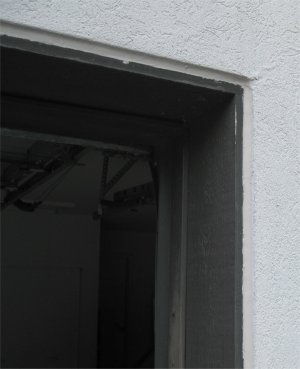 |
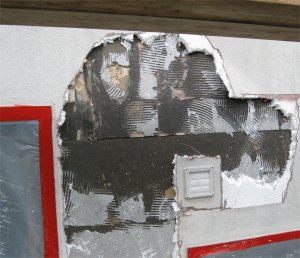 |
Typical of EIFS or synthetic installations is
this
big gob of caulk around doors and windows.
Usually, everything underneath the caulk is black from mildew. |
Tearing off EIFS foam shows much of the house
was stuck
on gypsum sheathing (exterior sheet rock).
Please keep scrolling down. |
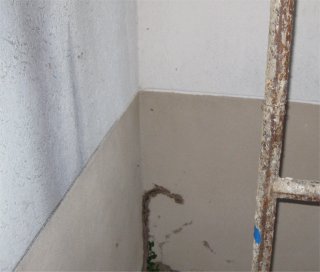 |
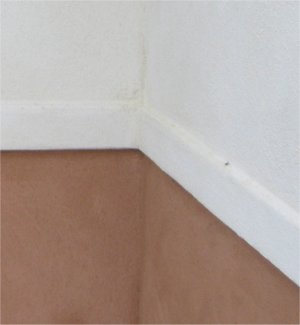 |
| BEFORE: A groove with caulk marked the line between the two
colors. |
AFTER: A decorative band marks the line.
The band makes the wall look bigger, and adds a solid masonry feel
to the stucco.
It's my idea. I hope you like it. |
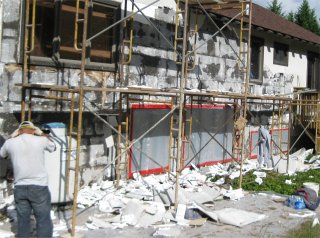 |
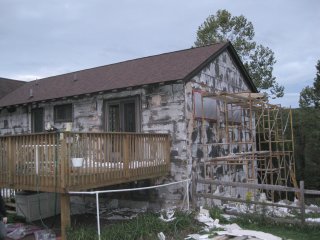 |
| EIFS torn off. We cleaned up the foam
immediately to keep
it from blowing all over the place. |
House peeled off waiting for lath and stucco.
Please keep scrolling down |
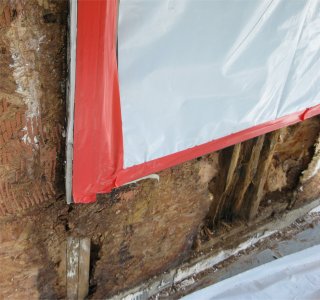 |
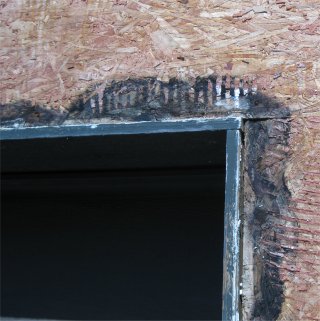 |
| Typical rot below windows on an EIFS tear off. |
Black mildew behind caulking was killed using bleach. |
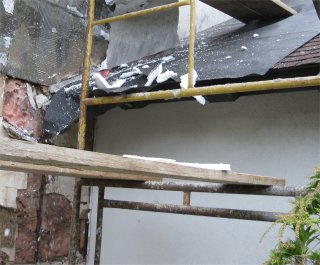 |
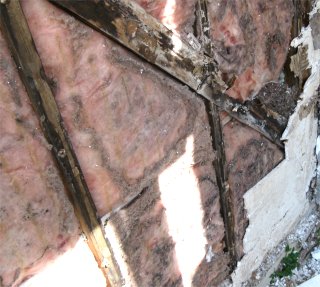 |
| Typical of EIFS is severe rot under a roof intersection. This
may have
been prevented by adequate flashing. |
Gypsum sheathing had completely deteriorated.
The framing was wet and soft, but wasn't too bad after it dried out
a couple of days. |
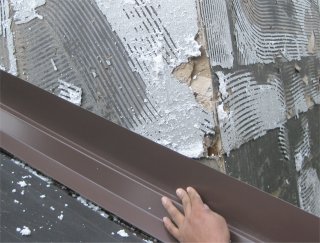 |
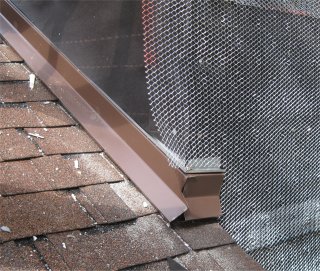 |
| These counter flashings are of critical importance to prevent
leaks
in cold weather (or anytime). We made the counter flashing using a
metal
brake. |
Flange on counter flashing is overlapped with tar paper, then
lath
and stucco. |
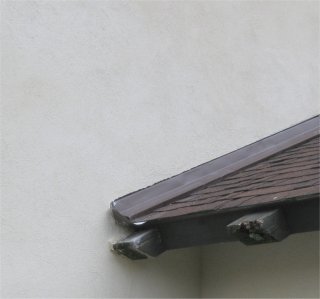 |
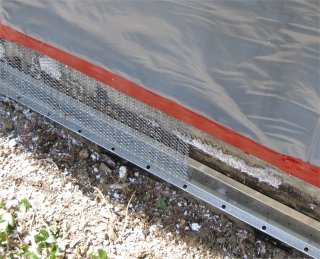 |
| A view of the finished wall showing the finished counter
flashing,
and the kick-out flashing at the bottom. The kick out is a little spout
to divert water away from the wall. |
Weep screed at bottom of wall has holes to allow water to
exit stucco
at bottom. As far as I know, no one else in the Washington area uses
these
weep screeds. |
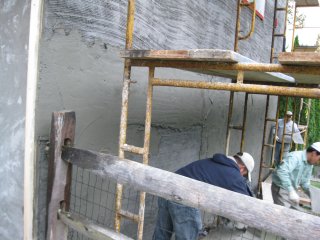 |
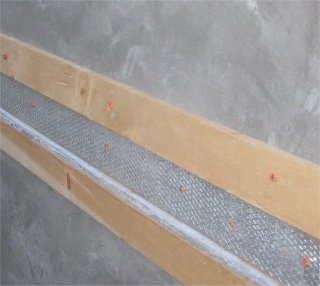 |
| Brown coat is straightened using screeds, or strips of mortar
set with
a string line. The walls must be real straight for the bands to look
right. |
Bands are made by forming the edges with one by fours. A
layer of metal
lath is nailed on for insurance that the band will never fall off. |
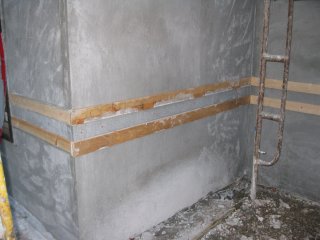 |
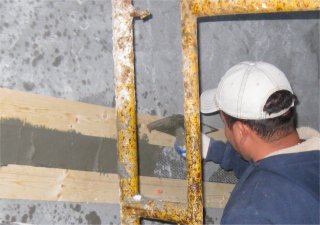 |
| Another view of the band detail. |
Band is filled with mortar. Later, one by's are removed
leaving a solid
band. |
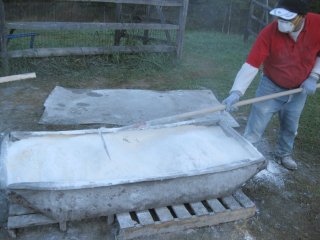 |
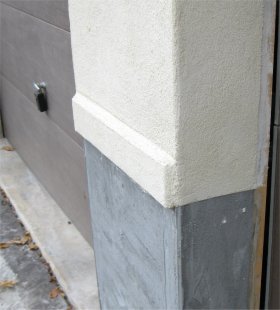 |
| White portland cement, lime and sand are dry mixed with the
dry California
color from Expo stucco. |
We made a tool to round the edges of the garage door returns.
Note
how the top edge of band is angled down for good water run-off. |
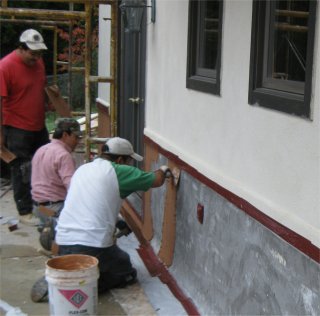 |
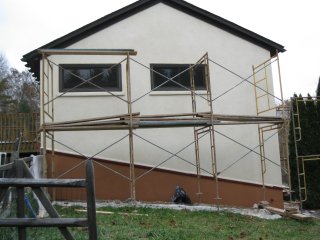 |
| Bottom of wall is rolled out. This provides good water
run-off, seals
the bottom of the walk, and looks cool. |
Color coat finished on bottom. |
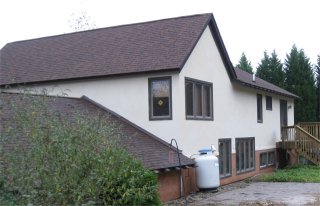 |
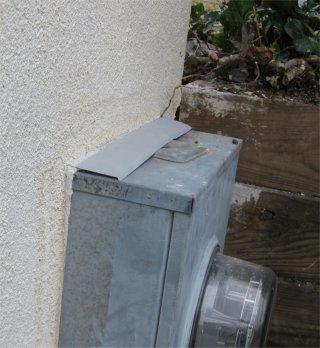 |
| View of the finished back of house. |
Top of electric meters are flashed. Without flashing, wood
behind meter
will rot. |























